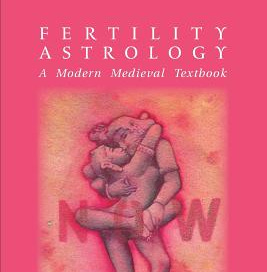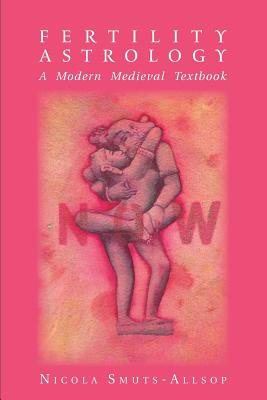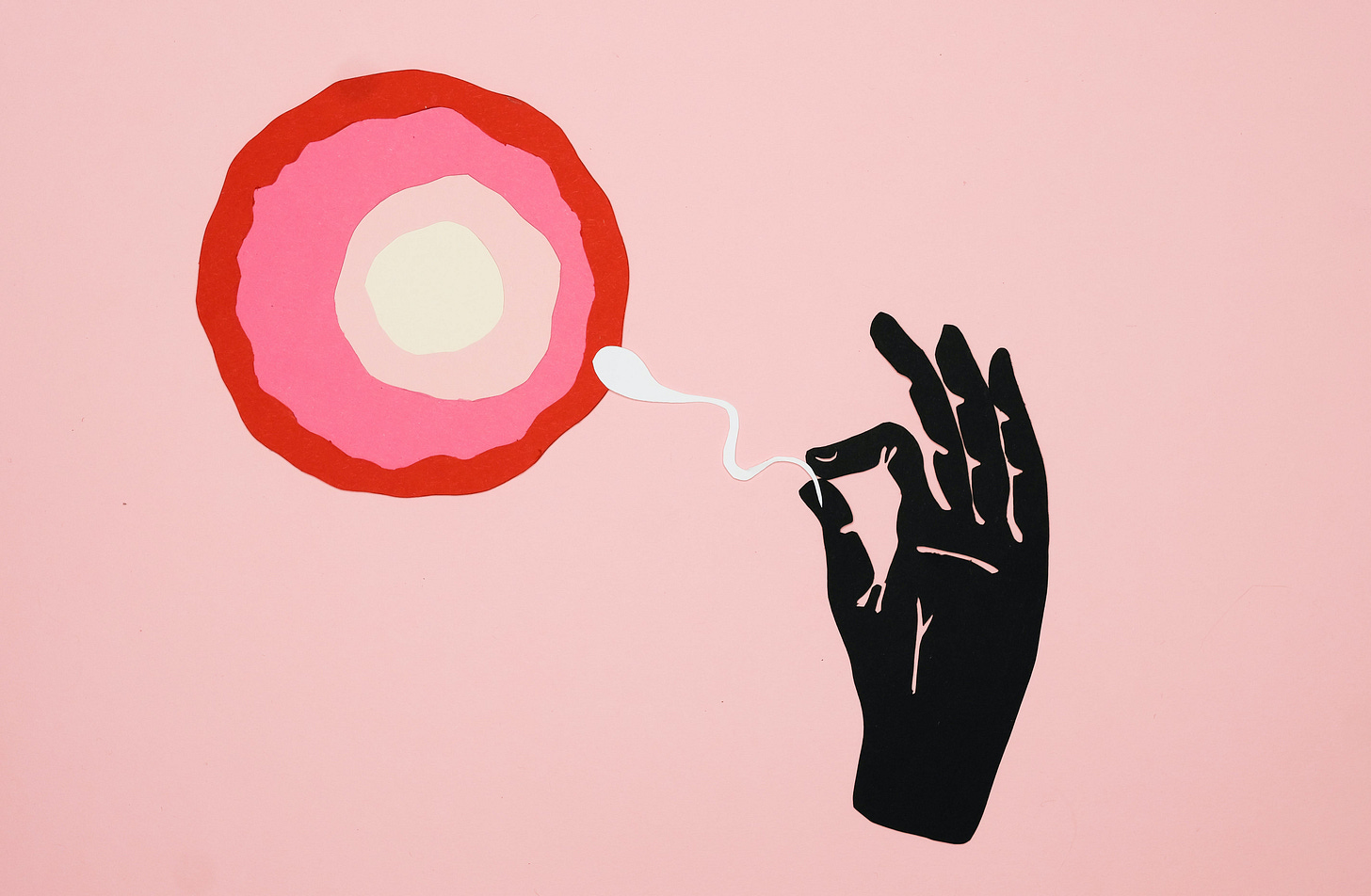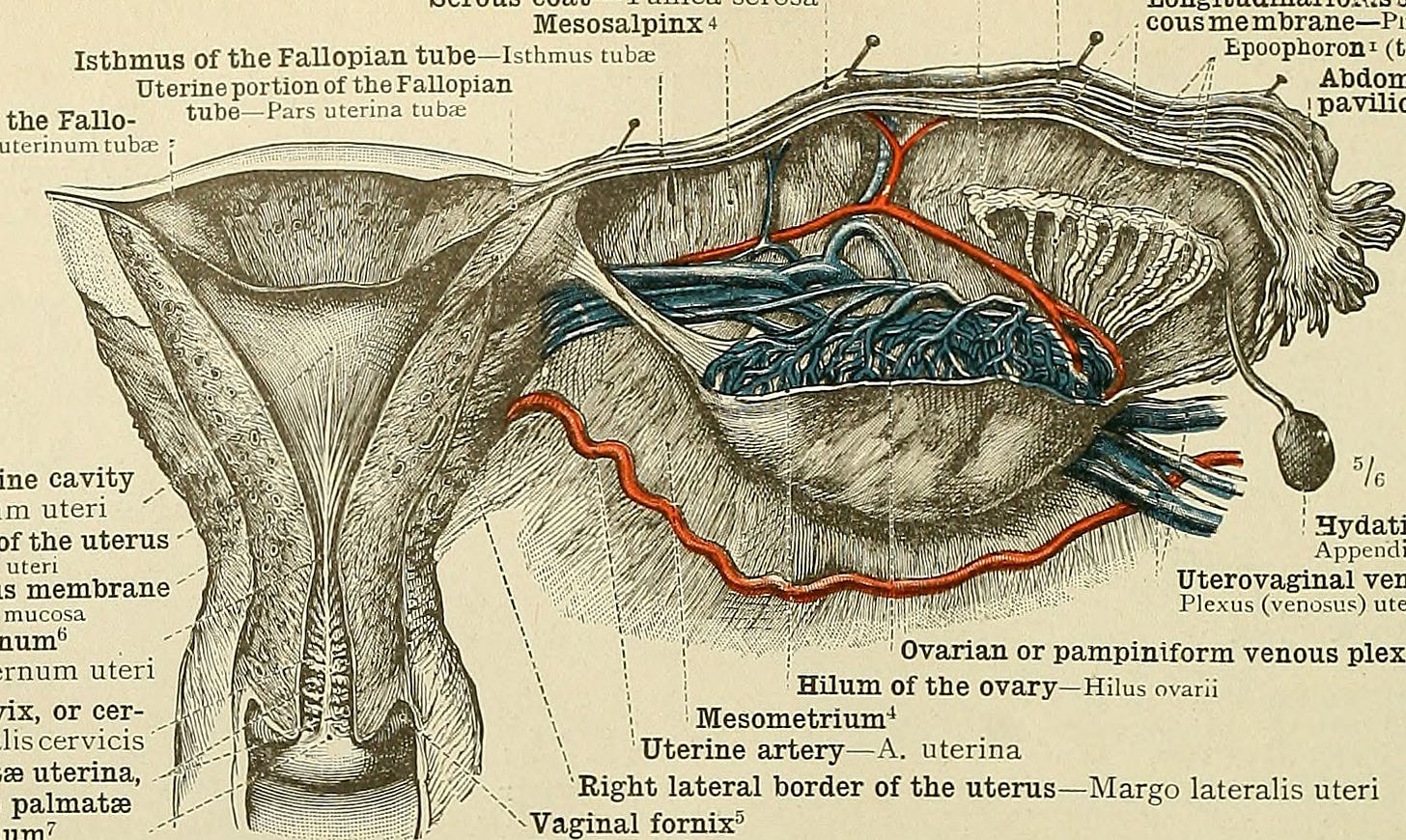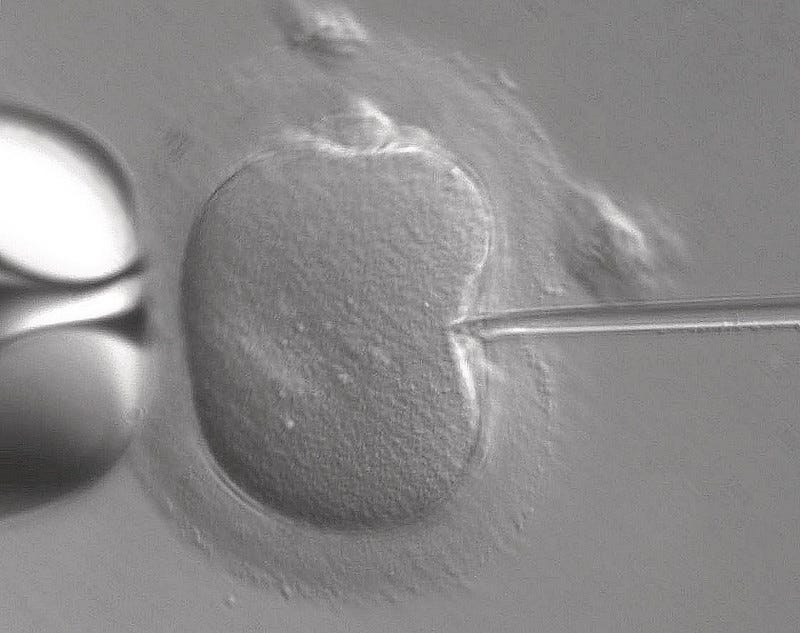Book Review: Fertility Astrology by Nicola Smuts-Allsop
161 pages of excellence; of utmost importance to the fields of infertility and astrological counselling.
“Should we not be using every technique at our disposal, considering the enormity of the fertility problems facing the human race? I ask these questions because astrology is easy to use. It does not require medical intervention. It does not require a religious conversion. Considering its usefulness, it is practically free.” (Pg. 1)
Mind. Blown.
These are the only words I have on finishing Nicola Smuts-Allsop’s Fertility Astrology, A Modern Medieval Textbook, her seminal work drawing on two decades of experience in astrological fertility counseling.
It is almost a year to the day that I listened to Nicola Smuts-Allsop on The Astrology Podcast. I remember my astonished jaw descending as she described the potential correlation between caesarean birth, diurnal astrology charts, delayed child-rearing and infertility.
Global infertility and declining birth rates are some of the most pressing issues of our time (I recently watched this documentary on the birth gap, highly recommend it).
According to the WHO, approx. 17.5% of the global population is affected by infertility, defined as failure to conceive after 12 months of active attempts. Only after a year of unsuccessful conceptions and miscarriages are those affected considered eligible for treatment.
Fertility therapies are financially and emotionally costly, and the emotional costs cannot be understated. In significantly strained relationships, almost a third of couples break up following unsuccessful treatments.
What if there was a way to investigate the psychosomatic influences upon fertility? What about good timing, or a “lucky” IVF clinic location? How about identifying the procedures most likely to be successful, evading wasted time, money and emotional disturbances?
Nicola Smuts-Allsop genuinely answers all of these questions, and more.
Fertile Lands, Fertile Bodies
This text provides an invaluable resource for those seeking to truly, holistically understand their fertility issues; a masterful synthesis of traditional medieval with modern astrological techniques, and solid grounding in the science of fertility treatment.
Fertility Astrology opens with a description of the historical significance of astrology with regard to the prediction of agricultural success, i.e. fertile soils, plentiful crops and abundant livestock.
Nicola wastes no time inviting the reader to seriously question why modernity has abandoned the powerful diagnostic and timing tool that is astrology:
“Why do our modern medical professionals refuse to use, or even make themselves aware of these rising and setting constellations as indicators of fertility for their patients? Do we, as a society, honestly believe that the seasonal changes, the ancient dialogue our forefathers had with the stars, is suddenly defunct, obsolete in our globalised and technological age? Why do we assume that one technology makes another redundant?” (Pg. 1)
You can sense her desperation, the kind that comes after the gut-wrenching, tremble-inducing realization that something is amiss; something of utmost importance is being overlooked.
Nicola firmly acknowledges the role of narrative therapy within the context of astrological consultation. “Narrative therapy is a collaborative and non-pathologizing approach to counselling and community work which centres people as the experts of their own lives.”
The idea here is that, when a medical diagnosis is taken out of context, without consideration of the client’s general health, wellbeing and intuitive knowledge, in favour of a purely scientific/pathological diagnosis, then the client is denied a viable avenue for healing outside of the prescribing capacity of the clinic.
Similarly, when an astrologer fails to acknowledge the lived experience of the client, in favour of “by-the-book” technical delineations, the client is denied participatory engagement with the unfolding meaning of their own lives.
“Fertility astrology is a subset of medical astrology, and the ‘main function of medical astrology’, according to Dr. Jane Ridder-Patrick, ‘is not to provide an orthodox medical diagnosis, but an astro-somatic one which elicits meaning and points to root causes’. … Medical science reduces people to statistics and tick boxes. Astrology is unique to the patient so the diagnosis is made from a unique standpoint, not a generalised model.” (Pgs. 9 and 10)
It is worth mentioning here that, although an “orthodox medical diagnosis” is not the goal, very often the astrology can and does assist with such, as evidenced throughout this book.
Astrologers like Nicola will listen to their client’s experiences in a non-judgmental way. This alone is of therapeutic benefit, and often the astrologer can re-frame challenges in a more positive and life-affirming direction, highlighting client strengths and validating their difficult experiences.
Her Moon is in opposition to Uranus … Emotionally speaking, she tells me that in her personal life, she suffers from ‘love it/hate it’ syndrome. She finds it hard to commit… Fertility is going to be an issue for anyone who lives with this kind of emotional tension and constant drive to assert independence” (Pg. 34)
Against All Odds
The previous excerpt is taken from the first of several case studies within the text, Amanda’s story.
In short, Amanda was exceptionally driven and career-focused. She separated from her husband due to infertility but decided later that she desperately wanted a child, preferably fathered by her ex-husband, while maintaining her independence from him.
Despite the fact that her ex-husband lived abroad, possibly with a new partner, after a thorough astrological delineation, meticulously detailed in the text, Nicola recommended that the 8th of January 2003 looked good for conception, at the particular location of the ex-husband.
Amanda found this rather incredulous, given that they hardly spoke. On the 10th of December 2002, she was contacted by her ex-husband asking if she was available to visit him the weekend of the 8th of January.
After a sexy weekend in the sack, she did indeed conceive, and happily co-parented her son with the ex-husband, all the while maintaining her independence through this rekindled “innovative relationship”.
This song springs to mind.
According to Nicola, Amanda’s story was the ultimate test of her faith in the veracity of astrology…
Aside from Mandy’s story:
“Things had gone horribly wrong in the donor egg collection, and Mandy was in a terrible state… I promised them as a couple that if they did not get pregnant on this cycle, then I would stop practicing as an astrologer. I meant it.” (Pg. 102)
Technical Blending
Nicola’s talent is particularly evident in her ability to blend and weave the more spiritual, conceptual, or psychological astrological symbolism with the technical particulars of fertility treatment and modern science.
She pays special attention to the condition of Mercury in charts, as Mercury represents the condition of the fallopian tubes, not just because of the association with thoroughfares, but as per Nicola’s insight, due to the facilitation of the alchemical union when ‘two-become-one’, and this occurs within the fallopian tubes.
She describes how the more promiscuous Arian tubes might have scar tissue from inflammation/STIs, or how Geminian tubes will “turn inside out to accommodate a tricky traveling egg” - did you know fallopian tubes can move?
I certainly did not. Again, mind blown.
Also, just because I’m a very Leo lady, I must add that I snortled when she described the stubborn and egotistical Leonine tubes:
Mercury in a fire sign indicates that the fallopian tubes are vulnerable to ectopic pregnancies - I am not sure if this is a sign of ‘stubbornness’ on the part of the tubes … or if the tube ‘thinks’ it is the destination point” (Pg. 153)
Nicola gives a lengthy treatment at the end of the book (pages 142 - 150) on assessing the condition of eggs, and this is where she most excels in demonstrating her firmly-footed grounding in modern medical science, backed by decades of astrological observation.
For example, she has observed that Moon in Gemini women may produce eggs lacking follicles, PCOS is common in Leo Moon women, and that defensive Moon in Scorpio or Capricorn eggs may require ICSI fertilization in order to pierce through the protective hardened egg membrane.
Nicola also observes that Moon-Neptune aspects are present for men and women who have been treated for leukemia in childhood, the treatment often damaging the sperm or eggs. The couples might not conceive without having frozen eggs prior, and Moon-Neptune, again, is often present for couples who are fortuituous enough to benefit from such.
In the case study of Raylene and Jacques, she describes the emotional manifestations of the Moon-Mars man, re-experiencing repressed childhood shame or emasculation throughout the IVF process, and how a change in mindset can optimize the outcome.
“Since sperm is reproduced every seventy-two days, a psychological shift or change in the way a man feels about these issues may indeed change the nature of the next batch of fresh sperm … The thought of egg donation is hard enough, but for the average man the concept of using another man’s sperm is, well, inconceivable.” (Pg. 84)
Timing “The Grueling Process of IVF”
Nicola conveys a deep sense of empathy towards those struggling with infertility, stemming from Nicola’s own experiences with IVF (in vitro fertilization). She reminds the reader consistently throughout of how “grueling” the process really is.
“The injections are painful and can wear a person down emotionally. After the specialist has scanned the woman … a day will be suggested to ‘retrieve these eggs’ - this is a euphemism for puncturing the internal wall of your vagina, poking a long needle into the nearby ovary, sucking the egg down the tube … and repeating the process until there are no more eggs. For some women with the Moon in Sagittarius, who have duly some twenty eggs, this can be more than a little uncomfortable.” (Pg. 56)
Hence the necessity of an accurate diagnosis and optimal timing; any errors in delineation may put the client through unnecessary discomfort, financial lending institutions and false hopes.
Nicola utilizes traditional techniques such as annual profection rulership, solar return, triplicity rulerships, solar arc, and midpoint techniques.
A novel technique investigated by Nicola is the direction of the Almuten of Pregnancy by triplicity. She ascertains the Almuten (i.e. planet with the most to say) of Pregnancy using the technique of Omar of Tiberius, an ancient Persian astrologer, and taking the lead from Greek Dorotheus of Sidon, directs this planet through three distinct triplicity Lord periods.
These triplicity periods of time are typically about 26 - 27 years (given a typical lifespan of 78 years or so) and each describes the quality of life with respect to the planet/topic being examined.
Nicola has taken this concept and innovated, modifying the fertility time periods to reflect the reality of lived experience, i.e. the beginning of fertile life with the first menses.
A woman’s fertile life is from age twelve to fifty … so the first phase is from age twelve to twenty-six… the second phase from age twenty-six … to thirty-eight, and the last phase from age thirty-eight to fifty years. (Pg. 122)
What you want is the triplicity ruler of the Almuten of Pregnancy for the age in which you are trying to conceive to be in good shape, known as Essential Dignity by astrologers.
Let’s return to excerpts from Amanda’s chart as an example:
“Lord of the Chart is Saturn in the 12th house, in rulership and in his Joy, and squaring the Midheaven… Her triplicity ruler for the second part of her life is Saturn, coincidentally also the Almuten of Pregnancy, which means that it is in the second part of her life that she will be most successful. (Pgs. 25 and 33)
Although highly technical in her delivery, (some grounding in traditional astrological techniques is recommended prior to diving in) Nicola does not avoid a lengthy elaboration of her methodology, something often lacking in modern astrological “cook-book” texts, and provides clear explanations of the techniques she employs.
After assessing the possibility of conception to be present, due to Saturn’s good condition in Amanda’s chart, she fine-tunes the optimal timing using solar arcs:
The most notable and glaring indicator of them all has to be a solar arc direction for 18 January 2003 (day nineteen of her cycle), where solar arc Jupiter conjoined her Venus/Uranus midpoint of her 5th house”. (Pg. 45)
Another technique that Nicola employed was the use of fixed stars to ascertain the most likely physical location (the right place at the right time) for conception.
It’s (partly) how she copped Amanda’s ex-husband was in a good spot, and contributed to her explanatory investigation of two women, Nancy and Lisa, who received the same treatment, in the same clinic, on the same day, hours apart, by the same health care provider, one defying a poor medical diagnosis, the other unfortunately unable to conceive.
I’ve never really incorporated fixed stars into my practice, but I will be ordering a copy of Brady’s Fixed Stars for further investigations for sure.
My New Obsession
The thing that I adore about Fertility Astrology is that Nicola describes a sound technical method, in modern plain English, rooted in rigorous traditional sensibility, that can really be applied to any area of life, so long as you can trawl through the ancient texts for the Almuten formulae (or find them using the Solar Fire software).
This is simply a wonderful guidebook, and we all want astrology to be practically useful - there’s only so many times we (excluding us Leos) can listen to a lengthy list of character traits and events that have already happened to us.
I’m quite excited to spend many more evenings revisiting this book. Nicola is one to watch - she published her research on the placebo effect of astrology on fertility as recently as 2021, and I truly expect more fascinating research to be conducted by Nicola in the years to come.
The thing I’m pondering on the back of this is, is astrology a science or an art? I would of course argue that the two are NOT mutually exclusive, given that the chemist developed the paint pigmentation, and the artist designed the apparatus.
So yes I would say both, but what I’m trying to tease out here is in response to critics of astrology I guess (which may not be you if you are reading this in the first place).
The definitions of art are too numerous, because it is numinous afterall, and the Cambridge definition of a science is “(knowledge from) the careful study of the structure and behaviour of the physical world, especially by watching, measuring, and doing experiments, and the development of theories to describe the results of these activities”.
It’s safe to say that Nicola Smuts-Allsop brings the holistic best of the counselling arts and the meticulous scientific application of astrology to light in her practice; Fertility Astrology, A Modern Medieval Textbook is exemplary of best practice in action, and I thank her for her dedication to all those deserving parents and babies out there.
Hello, Hello There
I’m Sarah Griffin, Vilomah, ex-pharmaceutical scientist, creative and inquisitive spirit, lover of both the macabre and the mystical. This is a space for pondering, so please do voice your ponderings in the comments.

